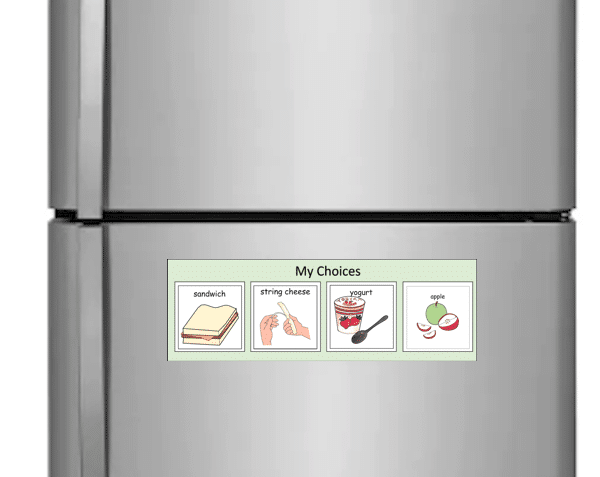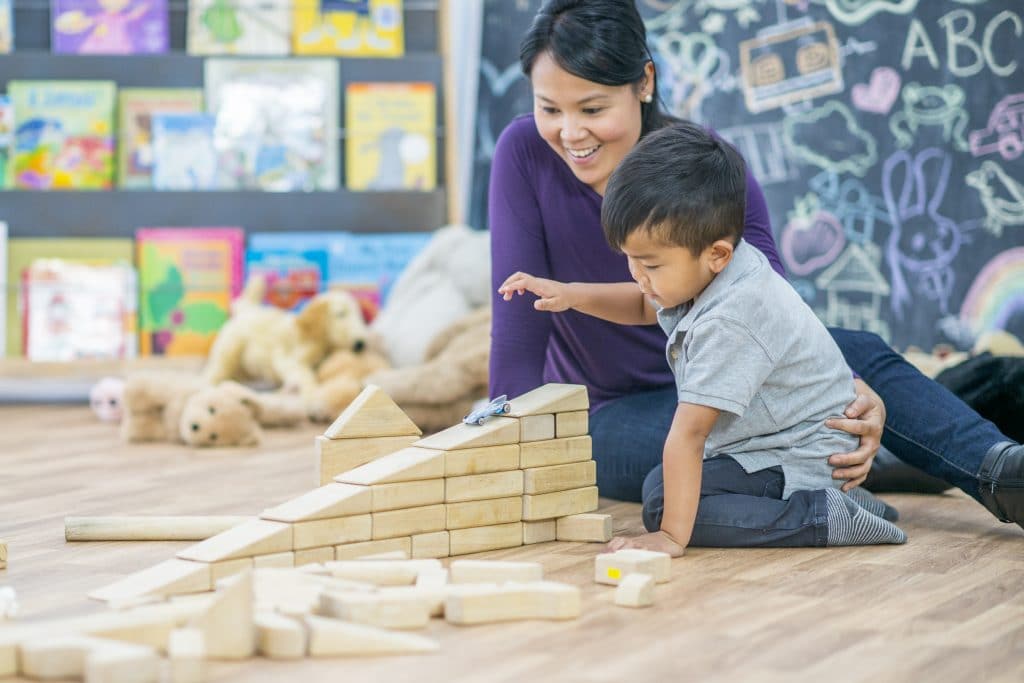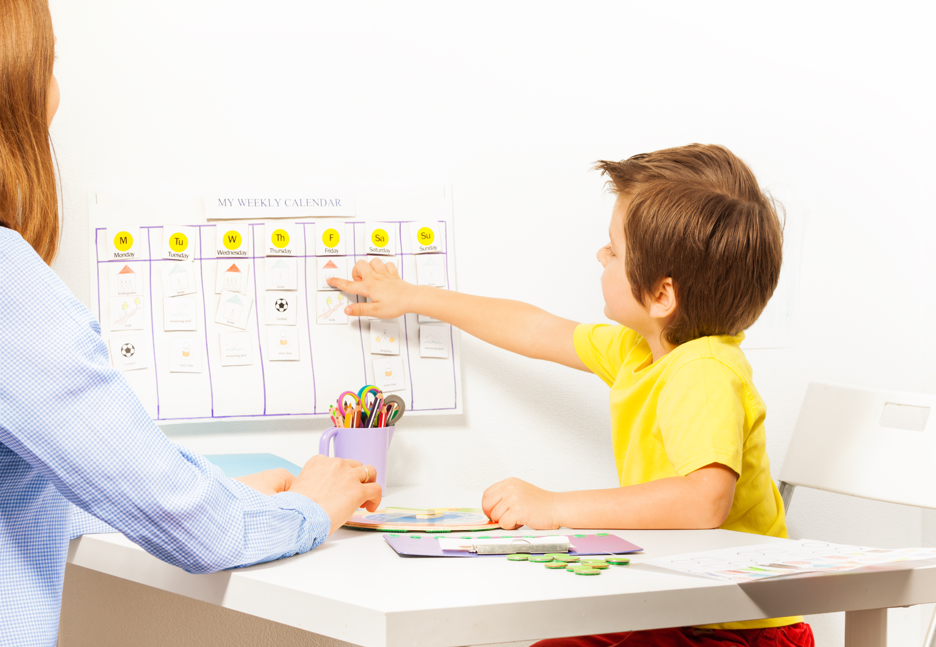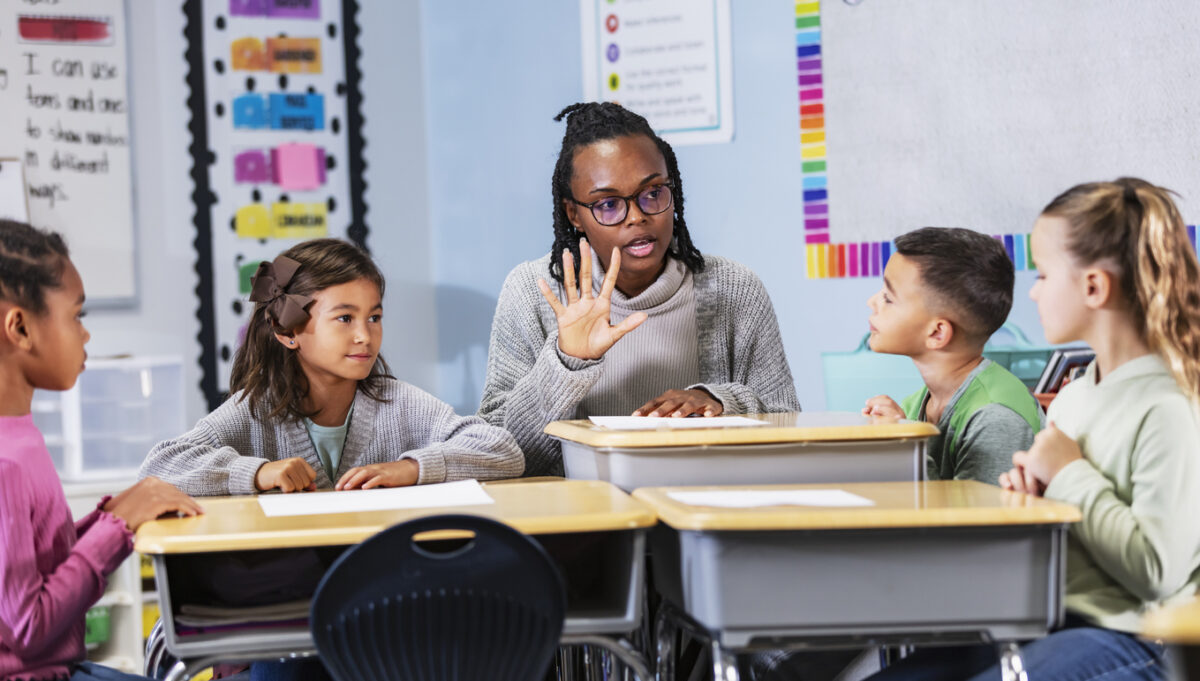Each year, one in four children under the age of five are identified by their family doctors as being “at risk” for developmental delays. Such identifications are made by pediatricians during routine screenings at annual check-ups. Pediatricians and preschool teachers often recommend speech therapy, physical therapy, occupational therapy or ABA therapy (Applied Behavior Analysis) as interventions, depending on a child’s specific needs. But if there’s a wait for these highly sought after services, what should your family do?
Here’s the good news: You are a powerful part of the process. Research has shown that parent-child interactions are an impactful way to help toddlers to connect with others and communicate. In this post we offer some simple strategies to increase your toddler’s communication and language skills at home, in fun, motivating ways, during your daily routine.
Play-based Pivotal Response Training
At Kyo, we like to recommend that families use a method from the ABA therapy field called Pivotal Response Training (PRT) to create motivating learning opportunities at home. PRT focuses on the delivery of natural reinforcement, like making the activity motivating in and of itself, instead of providing unrelated, external reinforcement, like candy. Plus, PRT is often child-initiated, so it’s fun!
PRT was developed by a speech therapist, Dr. Lynn Koegel, and her husband, Robert, both of whom now teach at Stanford University. The goal of PRT is to make broad improvements in a child’s communication, social skills, and behavior, by targeting pivotal areas of a child’s development, like motivation.
Let’s take a look at how we can use PRT techniques to increase your child’s communication during play-time.
How to Motivate Your Child to Communicate:
Set the Stage for Success
Our first tip to increase your toddler’s communication, is to arrange their environment in a structured way that encourages communication. For instance, if your child has immediate access to all of their favorite toys, they won’t have a need to communicate to you when they are wanting to play with a specific toy. While it’s certainly a good idea to have some toys out at all times for your child to seek out independently, it’s also helpful to have some in sight, but out of reach. You might place a few favorite toys on a shelf that your child can see, but not reach. This will provide you with an opportunity to teach your child how to request one of the toys on the shelf.
Depending on your child’s existing communication skills, you might start off by reinforcing eye contact. When your child looks at the shelf of toys and then looks at you, you might look back at them and say in a bright, happy tone, “Oh! It seems like you want something from the shelf. I can help you!” Once your child is successfully making eye contact with you and showing joint attention you might teach your child to request an item from the shelf by handing you a picture of the object or by imitating your vocalization of the name of the object. Reinforce your child’s initial efforts right away, with verbal praise and by retrieving the object and saying something like, “Great job asking for the bubbles!” Eventually you won’t need to praise your child every time they ask for something. The item that your child desires in that moment serves as the natural reinforcer when your child successfully gains access to it.
Offer Choices
You can also encourage your child to choose between items, as a way to increase communication as explained in our earlier post. If your child is hungry and guides you to the refrigerator for a snack, you can provide two snack options and prompt your child to point at their choice, by asking, “Would you like (yogurt or apples) for your snack?”
To facilitate communicating food choices, hold up two snack options in front of your child and teach them to point to the snack that they desire, or velcro pictures of the snacks onto your refrigerator. You can then teach your child to select a corresponding picture of a snack that they desire and hand it to you to communicate what they would like to eat when they are hungry. Teaching a child to communicate with pictures is a wonderful way to bridge the gap when a young child is still learning to talk.

Choices can also be offered during playtime activities as a way to increase your child’s motivation to communicate. Set up an activity that your child enjoys, like a ramp for vehicles to race down. Hold a container of the items necessary to engage in the activity – in this case, vehicles, and present two choices at a time. If your toddler is at the very early stages of socio-communication development, you might start by offering a vehicle when your child looks at the vehicle of their choice and then looks back at you. Next, you might teach your child to point to the vehicle of their choice. For children who have emerging speech, you can model the word “car”, or “truck” and after that is mastered, teach your child to request vehicles by naming their color or size.

Takeaways
By making a few adjustments in how a home environment is set up and how playtime activities are structured, parents can help increase their toddler’s communication and to make meaningful advances in their socio-communication development. Using teaching methods from the field of behavior analysis, including PRT, and selecting activities based on your child’s interests in the moment increases your child’s desire to communicate and helps to create lasting social bonds.
Download free printable positive behavior change resources.
Download our free printable toddler communication resource guide.
If you are looking for more quick tips on how to use ABA strategies at home visit our Youtube channel.
You can also find more articles on a variety of ABA strategies here.




